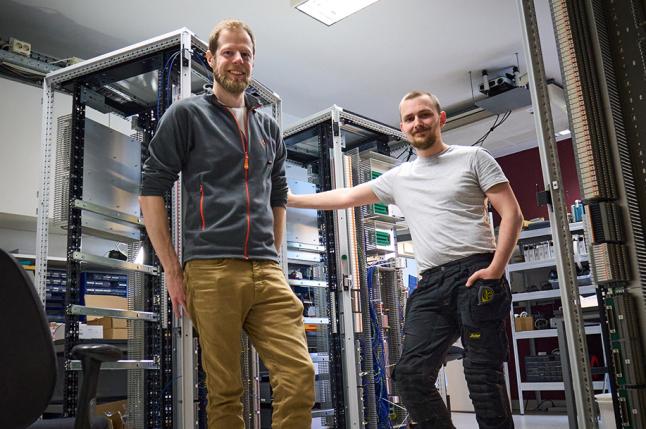New HIL rigs coming to market!
The lab at Infotiv is buzzing with life! Three hardware-in-the-loop (HIL) test rigs are about to see the light of day and assembly work is in full swing.
We caught up with Tommy Jansson, Jacob Lundkvist and Lisa Malis in the lab and asked them some quick questions.
Tommy is project manager and also responsible for purchasing and design in the HIL project.
What is most important right now?
- Not to mix up the numbers when we assemble the cables. But if we do, we will discover it at a later stage, because of course we test the test rig before delivery," says Tommy with a smile.
How to test a test rig?
- The rig is energized and measured with a multimeter. If necessary, we also perform functional tests.
Where will the rigs be delivered?
- They are going to marine and industrial applications. These rigs simulate engines instead of running them for real. Benefits of a simulated test environment include faster software development, where calibration and testing can be performed earlier in the development process. Less maintenance, user-friendly and environmental focus.
How long does it take to build a HIL rig of this type?
- About two months. But now we are doing three at the same time, so it will probably take three months. It's the first time we've built three at the same time, which also shows how much confidence our customer has in us.
How many rigs of this type have Infotiv built?
- More than 20 pieces
Why do customers choose rigs from Infotiv?
- We build unique test systems and special designs based on customer needs. Other players in the industry deliver more mass-produced test rigs. At Infotiv, the customer gets exactly what they want.
What is the benefit of a tailor-made test rig?
- We do all the adaptations here. If you buy a rig "off the shelf", the customer has to make all the adaptations himself.
How does the client receive the project from you? Do they have their own skills to take over the test rigs from you?
- In this particular case, the customer has their own expertise. It is not the first system they have received. But with other customers, we deploy the systems.
Who is most likely to buy this type of test rig?
- This is mostly the automotive industry, but we also work with other industries such as agriculture and manufacturing. In general, you could say that we supply everyone who works with embedded systems.
And there we leave Tommy, Jacob and Lisa among cables and multimeters in the lab. Thank you all three for an exciting insight into how a HIL test rig is created!
